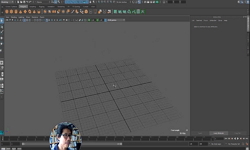Commercial plate bolus is generally used for treatment of surface tumor and required surface dose. We fabricated 3D-printed bolus by using 3D printing technology and usability of 3D-printed bolus was evaluated. RT-structure of contoured plate bolus in...
http://chineseinput.net/에서 pinyin(병음)방식으로 중국어를 변환할 수 있습니다.
변환된 중국어를 복사하여 사용하시면 됩니다.
- 中文 을 입력하시려면 zhongwen을 입력하시고 space를누르시면됩니다.
- 北京 을 입력하시려면 beijing을 입력하시고 space를 누르시면 됩니다.
https://www.riss.kr/link?id=A107109084
-
저자
이이성 ; 김정구 ; Lee, Yi-Seong ; Kim, Jeong-Koo

- 발행기관
- 학술지명
-
권호사항
-
-
발행연도
2020
-
작성언어
English
- 주제어
-
등재정보
KCI등재
-
자료형태
학술저널
- 발행기관 URL
-
수록면
9-14(6쪽)
- 제공처
-
0
상세조회 -
0
다운로드
부가정보
다국어 초록 (Multilingual Abstract)
Commercial plate bolus is generally used for treatment of surface tumor and required surface dose. We fabricated 3D-printed bolus by using 3D printing technology and usability of 3D-printed bolus was evaluated. RT-structure of contoured plate bolus in the TPS was exported to DICOM files and converted to STL file by using converting program. The 3D-printed bolus was manufactured with rubber-like translucent materials using a 3D printer. The dose distribution calculated in the TPS and compared the characteristics of the plate bolus and the 3D printed bolus. The absolute dose was measured inserting an ion chamber to the depth of 5 cm and 10 cm from the surface of the blue water phantom. HU and ED were measured to compare the material characteristics. 100% dose was distributed at Dmax of 1.5 cm below the surface when was applied without bolus. When the plate bolus and 3D-plate bolus were applied, dose distributed at 0.9 cm and 0.8 cm below the surface of the bolus. After the comparative analysis of the radiation dose at the reference depth, differences in radiation dose of 0.1 ~ 0.3% were found, but there was no difference dose. The usability of the 3D-printed bolus was thus confirmed and it is considered that the 3D-printed bolus can be applied in radiation therapy.
동일학술지(권/호) 다른 논문
-
- 대한방사선과학회(구 대한방사선기술학회)
- 최향하(Hyang-Ha Choi)
- 2020
- KCI등재
-
ATP meter를 이용한 초음파 탐촉자의 오염도 분류
- 대한방사선과학회(구 대한방사선기술학회)
- 하명진(Ha Myeong-Jin)
- 2020
- KCI등재
-
- 대한방사선과학회(구 대한방사선기술학회)
- 지태정(JI Tae-Jeong)
- 2020
- KCI등재
-
Manufacturing a Functional Bolus Using a 3D printer in Radiation Therapy
- 대한방사선과학회(구 대한방사선기술학회)
- 이이성(Yi-Seong Lee)
- 2020
- KCI등재





 ScienceON
ScienceON






